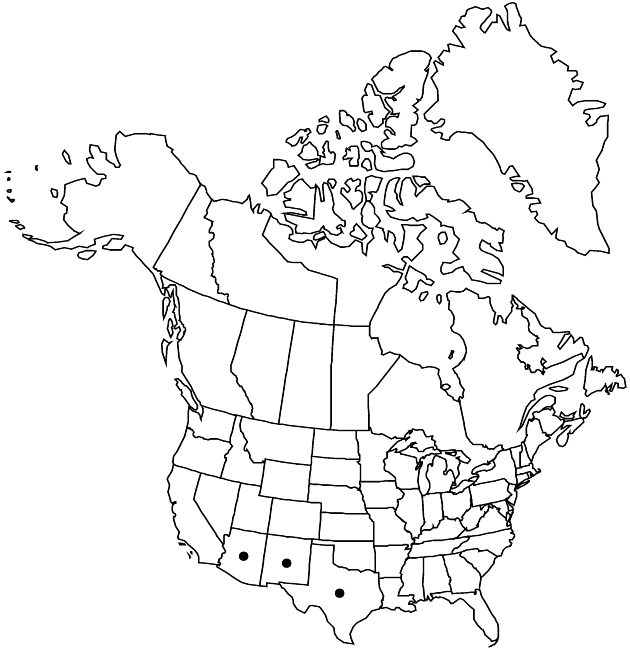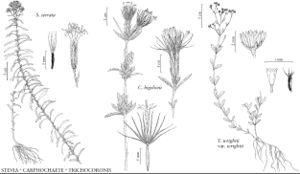Stevia serrata
Icon. 4: 33, plate 355. 1797.
Perennials, 40–100 cm. Leaves mostly alternate (at least not regularly opposite, crowded, with axillary clusters of smaller leaves); petioles 0; blades (3-nerved) narrowly lanceolate to lance-linear, 1.5–4 cm, margins serrulate. Heads borne in ± congested, compact clusters. Peduncles 0 or 1–4 mm, sessile-glandular, villous-puberulent. Involucres 5–6 (–7) mm. Phyllaries sessile-glandular, sparsely villosulous, apices acute to acuminate. Corollas white or pink, lobes sparsely sessile-glandular, finely villous-hirsute. Pappi usually ± equaling corollas, sometimes coroniform or 0.2n = (22–) 34 (–54) univalents, less often 17 pairs.
Phenology: Flowering (Jul–)Aug–Oct.
Habitat: Roadsides, disturbed sites, oak-grasslands, oak-pine grasslands, and oak, mixed conifer-oak, mixed pine, ponderosa pine-Douglas fir, pine-fir-aspen, spruce-Douglas fir, and fir-hemlock woodlands
Elevation: 1700–2700 m
Distribution

Ariz., N.Mex., Tex., Mexico
Discussion
Some collections of Stevia serrata from Cochise and Graham counties, Arizona, were annotated by J. L. Grashoff as “S. serrata > plummerae”; in leaf arrangement and morphology (venation, margin, and shape), they appear to be similar to typical S. serrata from the same area.
Selected References
None.
Lower Taxa
"fine" is not a number.
